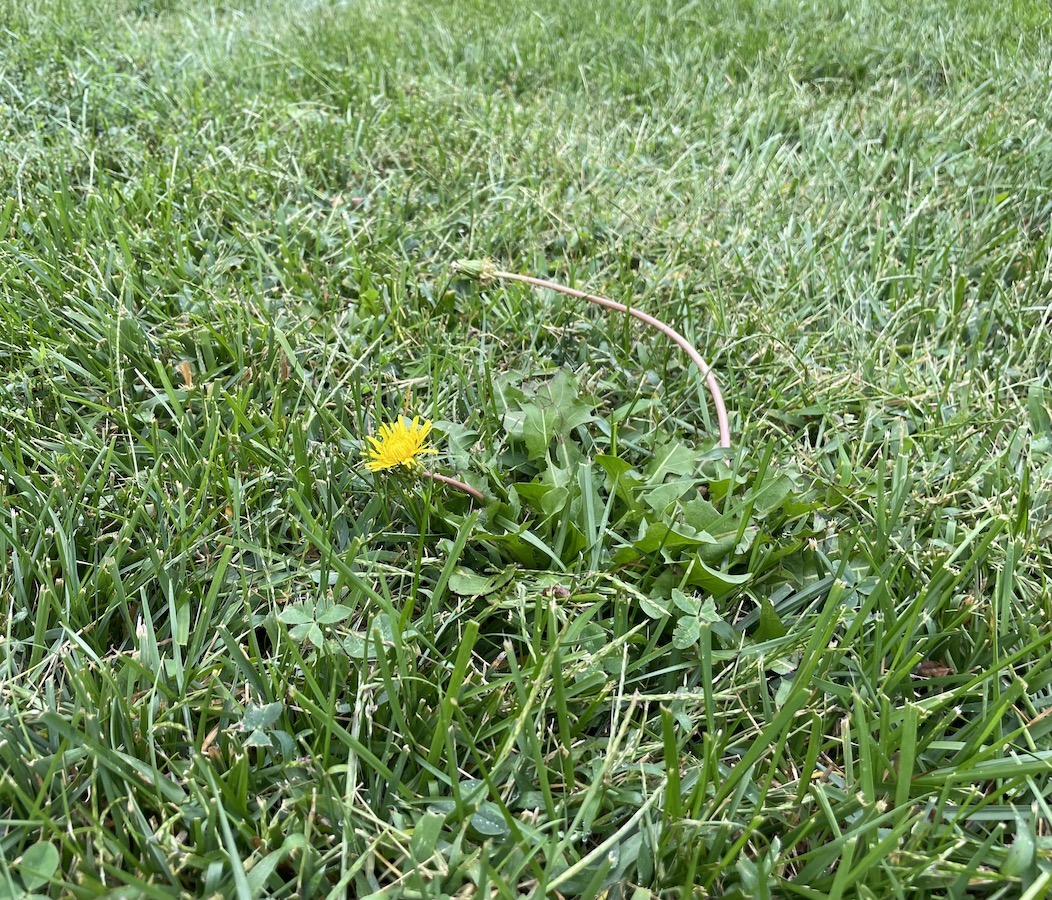
Friday, September 22, 2023
Author: Amanda Folck, Turfgrass Extension Educator
In turfgrass areas, perennial broadleaf weeds are difficult to control. Perennial broadleaf weeds include dandelions, ground ivy, white clover, to broadleaf plantain. These types of weeds can also be an indicator of other problems.
Table 1. Perennial broadleaf weeds that can also be signs of other problems in the turfgrass area.
| Name of Perennial Broadleaf Weed | Name of Concern |
|---|---|
| Broadleaf Plantain | Alkaline soils |
| Ground Ivy | Shade and moist areas |
| Dandelion | High potassium |
| White Clover | Low mowing height and not enough fertility |
As listed in Table 1, the presence of some perennial broadleaf weeds could occur due to abnormalities in soil fertility or environment. A soil test is a good starting point to help manage weeds. Removing the vegetation growth of a perennial broadleaf weed can aesthetically eliminate the appearance of the weed. However, the vegetation growth (tubers, corms, bulbs, rhizomes, and stolons) and taproots can still be in the soil. This can lead to expected growth in the following year for the perennial broadleaf weed.
Preemergence vs. Postemergence herbicide
Preemergence herbicides are used for annual weeds like crabgrass, henbit, to yellow foxtail. The timing for application for preemergence annual grassy weeds like crabgrass to foxtail, also known as summer annuals, will occur in the spring. Annual broadleaf weeds that can be treated in the fall with preemergence herbicide are common chickweed and henbit, known as winter annuals.
The best approach in chemical management for perennial broadleaf weeds is postemergence herbicides. For the spread of growth, annuals are spread by mostly seed compared to perennials and are grown by both seed and vegetation. In combination with growth and a longer life cycle (2+ years) perennials are not effective with preemergence herbicides.
Timing for postemergence herbicide with perennial broadleaf weeds
When it comes to controlling postemergence herbicide with perennial broadleaf weeds, timing is important for application. The reasons to control perennial broadleaf weeds in the fall instead of spring are:
- Better effectiveness of managing targeting weeds.
- Decrease risk for ornamental damage.
- Turfgrass in the cooler conditions can grow to fill in the voids.
Approach for postemergence herbicide weed management
- Identify the perennial broadleaf weeds. Identification to determine that the weeds being managed are perennial broadleaf weeds is essential before application. The wrong identification of a weed can lead to using the wrong herbicide to manage the perennial broadleaf weed.
- Look at the formulation of the herbicide, specifically the group number (known as mechanism of action). Make sure the formulation and herbicide are directed to the management of the specific perennial broadleaf weeds. Rotate every few years for adequate control. Remember to read the herbicide label, which lists the specific weeds to treat for that specific herbicide. Table 2 shows the common formulations and the type of weed control.
Table 2. Postemergence herbicides for weeds in turfgrass areas.
| Group Number | Common Name | Weed Types |
|---|---|---|
| 4 | 2,4 D | P&A broadleaves, P&A grass |
| 14 | carfentrazone | A broadleaves |
| 4 | dicamba | P&A broadleaves |
| 1 | fenoxaprop* | P&A broadleaves, P&A grass |
| 4 | fluroxypyr | P&A broadleaves |
| 4 | mecoprop (MCPP)* | P&A broadleaves |
| 4 | quinclorac | P&A broadleaves, P&A grass |
| 14 | sulfentrazone | P&A broadleaves, P&A grass |
| 4 | triclopyr | P&A broadleaves, P&A grass |
| For the abbreviation in weed types: P is perennial, A is annual, and P&A is perennial and annual.
Note: Herbicide with common chemicals of fenoxaprop and mecoprop are listed to not be used in Buffalograss as *. | ||
- Split postemergence herbicides to two applications. Apply herbicide two to three weeks after the first application because perennial broadleaf weeds are not effective after one application. Allow a few days for the herbicide to absorb into the target perennial broadleaf weed after application before mowing.
Remember to follow all label directions and the personal protective equipment (PPE) recommended on the pesticide label before application.
Supporting information for this article is from the Turfgrass Weed Control for Professionals (2023 edition).
The University of Nebraska-Lincoln is a collaborator for the Turfgrass Weed Control for Professionals. The guide helps list all the herbicides in the market and the ratings of the broadleaf weeds and annual weeds in the cool & warm season grasses. You can order this guide online for a physical book copy and/or a PDF version.